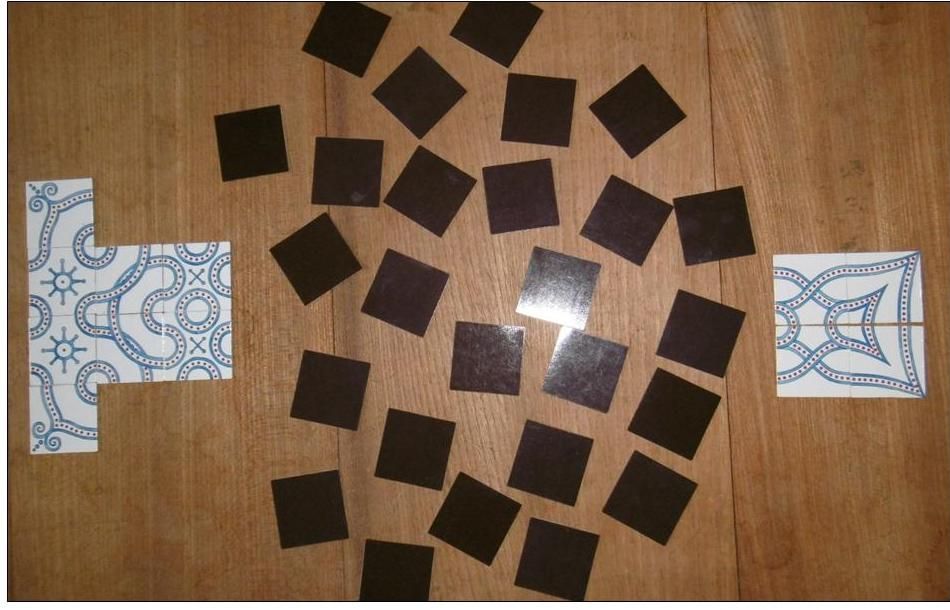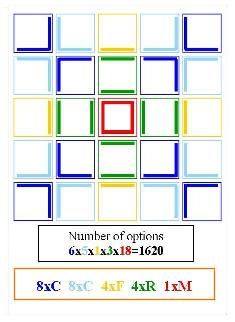
Game 1 A simple game is "Pairs" or "Pelmanism" 2 or more players
Take two of each of 10-20 different tillions, mix them and turn them face down (scattered randomly or in a grid pattern). Each player takes it in turn to turn two tillions face up so that everyone can see them, if they do not match he turns them back face down. If the two tillions match, the player takes them and has another turn. As each pair of tillions is won it can be added to the player’s pattern. The winner of the game is the player with the most pairs/the largest pattern - and the patterns that emerge will be unpredictable and fascinating.
Game 2 In a variation on "Pairs", the players take it in turns to turn over one tillion at a time, but leave them face up, and when a matching pair is spotted the first player who calls "Match" and immediately identifies the pair by touching both matching Tillions, can claim it for their pattern.
Game 3 Using the Pattern Schemes like those on the next page (which can be downloaded and printed), players race to complete the design on each card. The scheme must be followed accurately and the tillions must be the right way round so that the pattern is "true" with joining sides meeting joining sides (each little square in the diagram represents a tillion - a bold line on a little square represents a joining side). On this example the players need to find eight corners of one type, eight corners of another, four matching runners, four matching finials and a middle. There are many correct ways to do this (1620 in the large box) and they will all be pleasing.
Game 4 In a variation on the above, only the "recipe" on the bottom of the card is seen and the players have to make a true pattern. This may vary from the card, but is acceptable provided that the design is symmetrical (rotational or mirror symmetry) and all joining sides are joined.

Game 5 The challenger makes a simple 3x3 square Tillion design. They show this to the next player for five seconds, who then has to recreate it from memory by selecting the right tillions from the box. They then become the challenger and make a 3x3 design for the next player. The next round they make a 4x4 square. No design should take more than four of any of the tillions for this game so that there are enough for the original design and the copy. (NB The envelope sets don't have eight of each tillion).